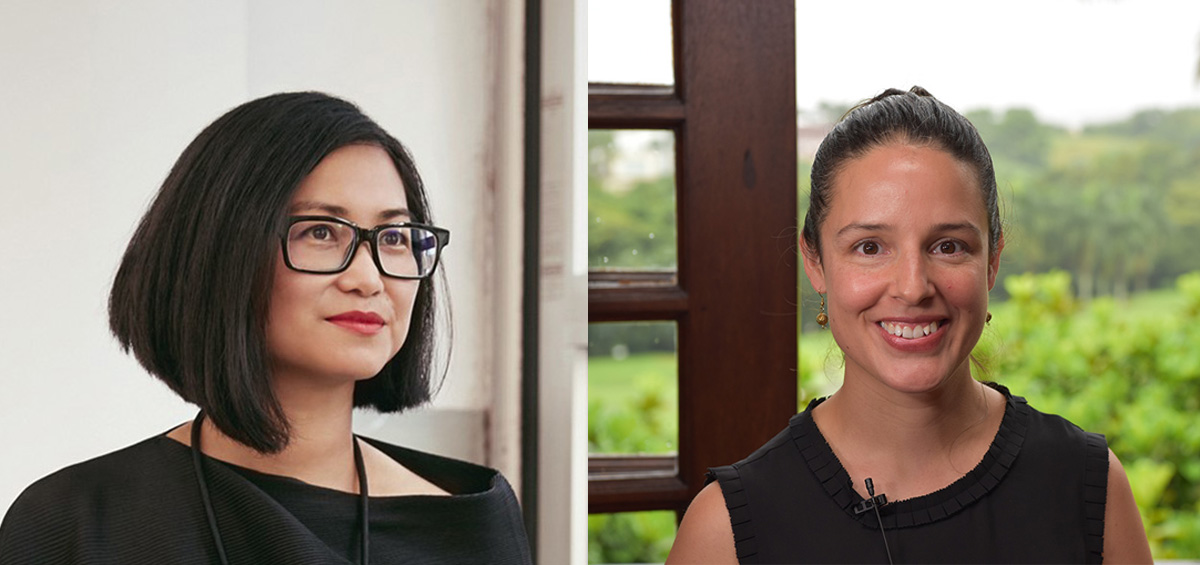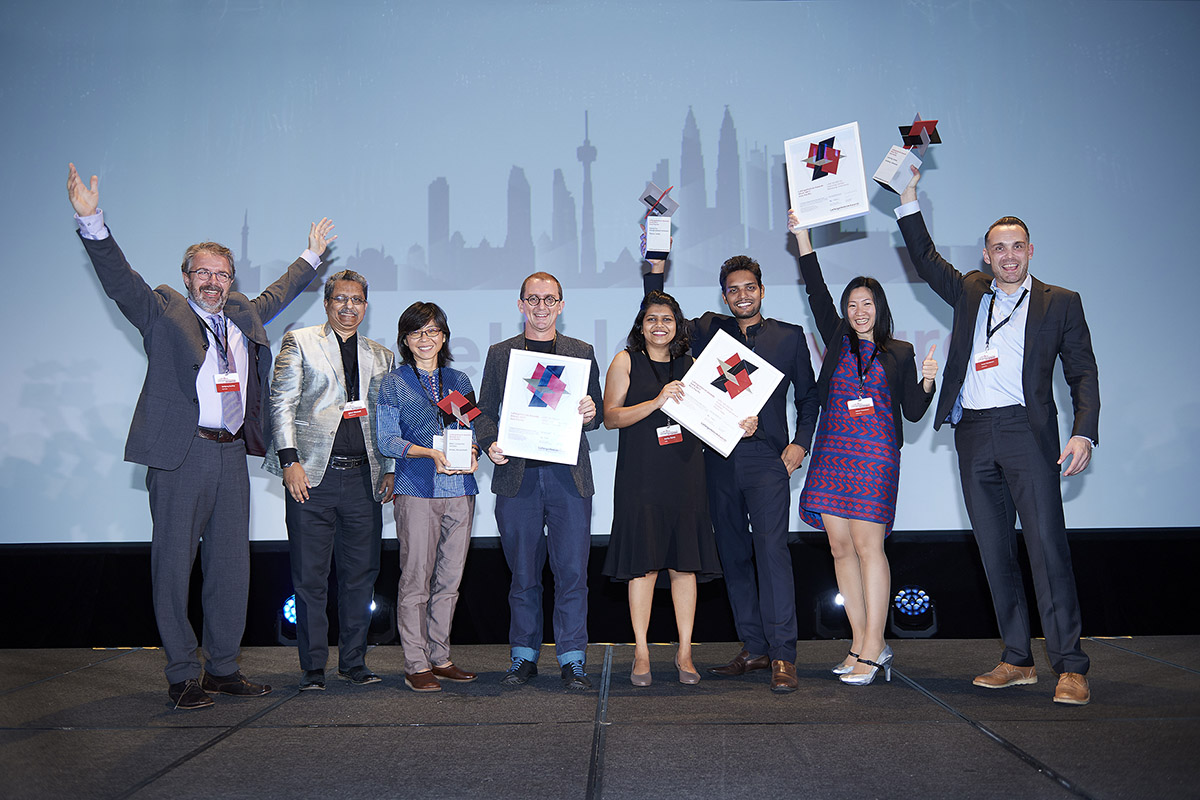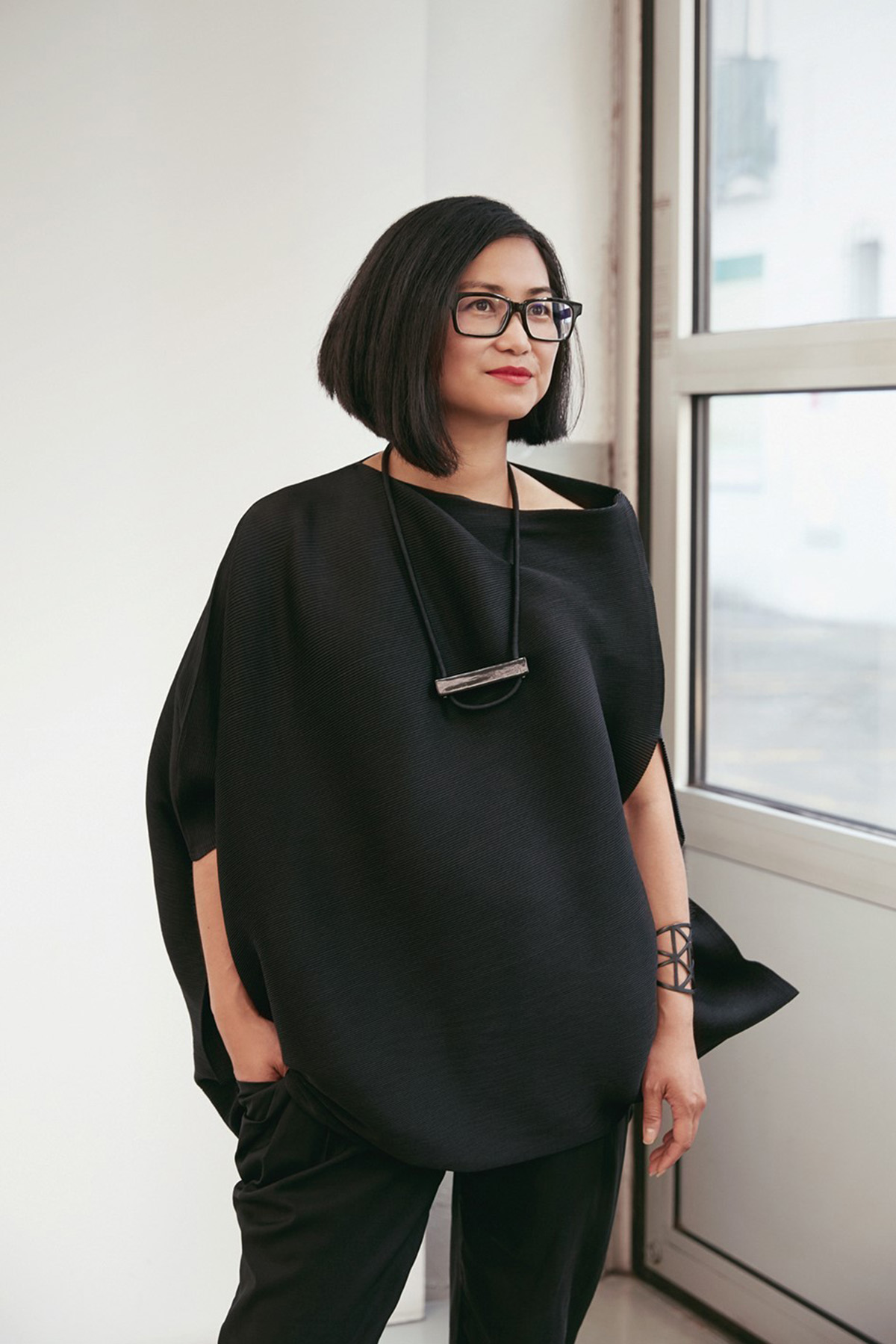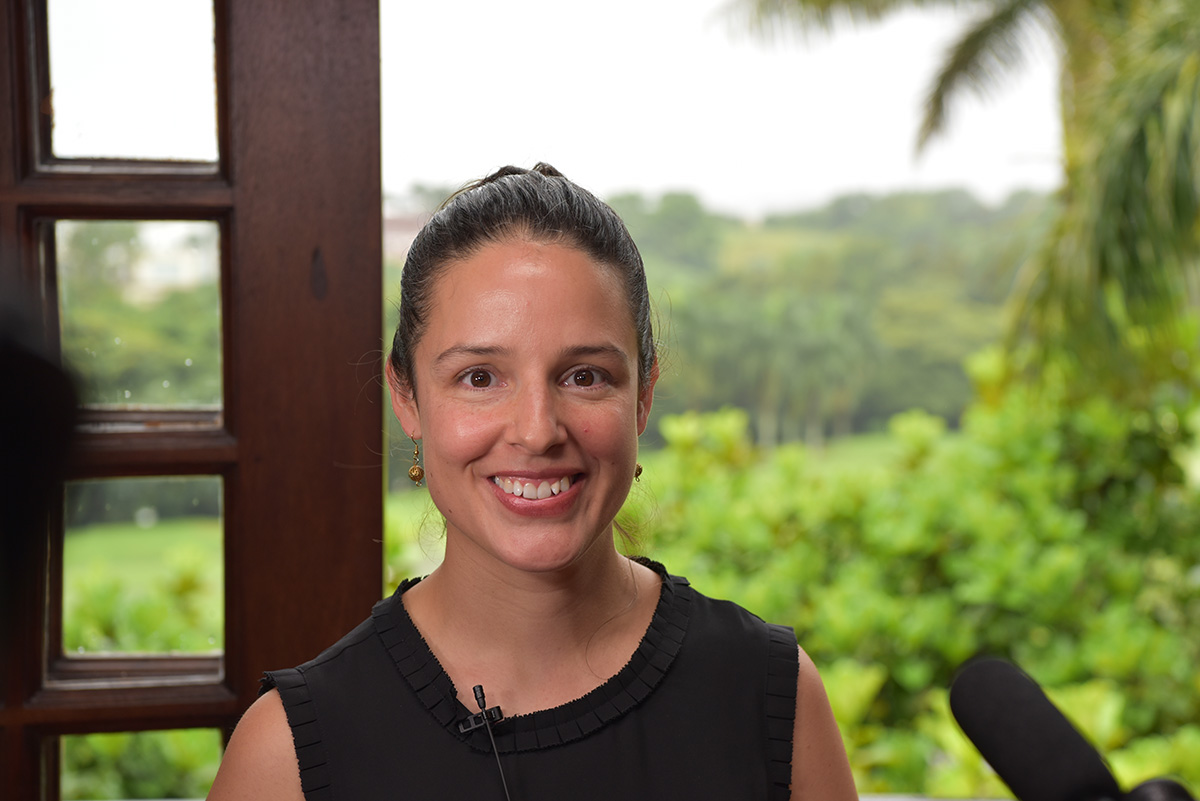Submitted by Berrin Chatzi Chousein
Interview: Jeannette Kuo and Loreta C. Reguera on sustainable construction for LafargeHolcim Awards
Switzerland Architecture News - Feb 01, 2020 - 12:25 4954 views

"Truly sustainable construction cannot be evaluated simply through checklists but rather should consider the holistic impact of each project," says Jeannette Kuo, Head of the LafargeHolcim Awards jury for Europe in 2020 and Founding Partner of Karamuk Kuo Architects in Switzerland.
"And this includes the strength of the design and its contribution to our social and collective environment," Kuo adds in an exclusive interview with World Architecture Community as the deadline of the LafargeHolcim Awards is fastly approaching.
The 6th Cycle of LafargeHolcim Awards is receiving entries until February 25, 2020 and the Awards recognizes projects and concepts from architecture, engineering, urban planning, materials science, construction technology, and related fields. The aim of the Awards is to seek real projects as well as bold ideas that combine sustainable construction solutions with architectural excellence. The competition offers a total of USD 2 million in prize money.
The LafargeHolcim Awards' “Step-by-step” guide explains the evaluation criteria and illustrates how to enter the competition.

Image courtesy of the LafargeHolcim Foundation
But what exactly does sustainable construction mean and how is it defined? How do today's technologies shape sustainable architecture and construction? What kind of assessment strategy does the LafargeHolcim Awards follow?
To delve into these questions on sustainable construction and architecture, World Architecture Community spoke to the Head Jury Members of LafargeHolcim Awards for Sustainable Construction from four regions of the world: Jeannette Kuo, Founding Partner of Karamuk Kuo Architects in Switzerland (jury for Europe), Loreta Castro Reguera, Design Director and Founder of Taller Capital in Mexico (jury for Latin America), Mariam Kamara, Principal and Owner of atelier masōmī in Niger (jury for Middle East Africa) and Nirmal Kishnani, Professor of Architecture, School of Design & Environment, at the National University of Singapore (jury for Asia Pacific).
The independent juries will evaluate entries for the LafargeHolcim Awards for Sustainable Construction in five regions of the world.
"Sustainable construction is a holistic approach"
"I am convinced that sustainable construction in more comprehensive perspectives, encloses a thoughtful and holistic design phase, where defining concepts that will last during the entire building’s lifespan, are established," says Loreta Castro Reguera, Head of the LafargeHolcim Awards jury for Latin America in 2020 and Design Director and Founder of Taller Capital in Mexico.
"The relationships that the intervention will have with its environmental, urban, social, cultural, economic and political contexts, should be defined in an attempt to understand the performance that the project will have."
"Consequently, programing, materiality, atmosphere, edification, and construction methods, become natural outputs enriched by people. This process calls for teams rather than for individuals," Reguera adds.
In the first part of World Architecture Community's exclusive interviews on sustainable construction for the LafargeHolcim Awards, you can find the interviews with Jeannette Kuo, Founding Partner of Karamuk Kuo Architects in Switzerland (jury for Europe) and Loreta Castro Reguera, Design Director and Founder of Taller Capital in Mexico (jury for Latin America).
WAC's exclusive interviews with Mariam Kamara and Nirmal Kishnani will also be published soon.
You may find the full transcript of our interview with Jeannette Kuo and Loreta Castro Reguera below:

Jeannette Kuo, Founding Partner of Karamuk Kuo Architects in Switzerland (jury for Europe). Image courtesy of the LafargeHolcim Foundation
Jeannette Kuo, Founding Partner of Karamuk Kuo Architects in Switzerland (jury for Europe).
A jury of nine experts headed by Jeannette Kuo will evaluate entries in the 6th International LafargeHolcim Awards for the region of Europe. She is also Assistant Professor in Practice at the Harvard University Graduate School of Design (GSD).
Established in 2010, Karamuk Kuo Architects focuses on the intersection of spatial concepts with constructive technologies to approach architecture from its basis as a physical discipline.
Berrin Chatzi Chousein: The LafargeHolcim Foundation focuses on sustainable construction in its Awards Program by tackling the five important issues for its evaluation process (progress, people, planet, prosperity, place). Could you please tell us how exactly would you describe sustainable construction?
Jeannette Kuo: Sustainable construction is about building consciously for the future – this means not only being selective about the materials and processes used or being sensitive about our resources and reducing waste, but also taking into account the interconnectedness of each project to our larger social and physical environment. No matter the scale of the project, it should consider the relationships and impacts that extend beyond its immediate site. This can be understood as reducing the ecological footprint through the embodied energy of the materials sourced, being conscious of their origins and their lifecycles. Or it can be the contributions that design brings to the well-being of our society through its built environment – the ways in which quality spaces build communities, inspire collective use, and extend heritage.
Berrin Chatzi Chousein: When you evaluate the construction stages and design principles in today's architecture and urbanism, how do you judge the appropriate method to comply with these five principles? And are these principles in general controllable by authorities or governmental bodies?
Jeannette Kuo: Truly sustainable construction cannot be evaluated simply through checklists but rather should consider the holistic impact of each project, and this includes the strength of the design and its contribution to our social and collective environment. Of course, certain regulatory measures or incentives implemented by governmental bodies are important and necessary in ensuring a base level of compliance, especially in countries where the pressures for growth often run unchecked. Most of the time, this pertains to issues of energy use or materials that can be more readily measured. However, very often they are treated as add-ons that have no true impact on the quality of the design. This is only scratching the surface. In countries where many of these regulatory measures have been in place for some time, the urgency is to move sustainable thinking beyond the “obligation” and to fully integrate it into every design process. We’re talking about changing a design culture, not just imposing fines or highlighting a niche industry.
It is therefore important that we tackle these issues from the ground up, through the education of the next generations and the showcasing of innovative projects that lead the way. Government agencies are only one part of the equation. Within the profession, we have to hold each other accountable and inspire each other to do our part.
Berrin Chatzi Chousein: New tools are being developed and used in both the design and construction process of construction, such as 3D-print, Manufacturing Resource Planning (MRP), Off-site Construction, AI & Machine Learning, or VR, Building Information Modeling (BIM), Drones and New Materials, and we are experiencing faster production models (apart from the waste they leave behind, because many models actually undergo pre-construction phases for testing).
In the jury deliberation of the LafargeHolcim Awards, how are these new tools being addressed? What about geographic regions where such new techniques are not available or where there is no access to them?
Jeannette Kuo: When evaluating any project we also have to evaluate it within its given context. The tools are only as effective as the thinking behind them. In the last LafargeHolcim Forum held in Cairo (2019), there was a fantastic and provocative panel discussion co-moderated by Anna Heringer and Philippe Block precisely on high and low-tech processes. Anna and Philippe come from very very different perspectives but both are trailblazers in their own way. Anna has been on the ground in Myanmar working with the Rohingya refugees to construct sustainable communities where resources are extremely limited and the need to find material-conscious design techniques that can be simply done by hand is vital. Philippe has been changing the industry at the other end of the spectrum with his research at the ETH Zurich, using digital tools and technologies to rethink our material use and finding ways of optimizing construction. Both are necessary and not at all mutually exclusive. What is important above all, is the philosophy behind them which are in the end not so different. Within their own worlds, each one is making the most of what they have at hand and the resulting impact to each context is monumental.
"The LafargeHolcim Awards is the only award that recognizes and promotes sustainability with a global reach so its role and its potential impact is immeasurable"
Berrin Chatzi Chousein: How would you define "circular thinking" within the design and building industry, which we have heard a lot about in recent years? Are there direct implications of “circular thinking” for architects, investors or builders in construction?
Jeannette Kuo: Circular thinking is another way of thinking holistically. For example, it is the holistic consideration of materials and resources through their life cycle. It underscores the importance not only of where materials come from and how they are made but also where they end up and how they can re-enter the ecological system with zero waste. But circular thinking is also about the building as well. The average life-span of a building built today can be upwards of 80-100 years. Within that period, it may be renovated and upgraded several times. What happens to the materials that are replaced? What happens to the building itself when it becomes obsolete? Are there strategies to extend the life a building? These are all important questions to consider the moment we start designing. For investors, it is important of course to consider that to invest in a quality building that promotes social well-being will bring the greatest return despite a possibly higher initial cost. A truly well-designed space builds community and adds value over time and very often these are the buildings that become part of a heritage. That far outweighs the short-term gains of short-sighted planning. Smart investments therefore also profit from circular thinking.
Berrin Chatzi Chousein: Can you evaluate the importance of the LafargeHolcim Awards in a wider framework? What is the difference of it from other awards?
Jeannette Kuo: This is the only award that recognizes and promotes sustainability with a global reach so its role and its potential impact is immeasurable. It not only helps to establish a knowledge network of experts and professionals engaged with cutting edge work, but more importantly it has the potential to help spread the word and affect design through all the different actors involved in the realization of a project. What is particular about the award is that it is given to projects that are still in planning so it can help catalyze construction and take projects to the finish line. To a certain degree it is a remarkable grass-roots way of influencing a whole industry and to shine a spotlight on projects that are otherwise happening quite locally. The recognition and the discussions generated around the awarded projects will hopefully inspire other designers and, through the prestige, alert clients and government agencies to take these ecological issues seriously.

Loreta Castro Reguera, Design Director and Founder of Taller Capital in Mexico (jury for Latin America). Image courtesy of the LafargeHolcim Foundation
Loreta Castro Reguera, Design Director and Founder of Taller Capital in Mexico (jury for Latin America)
A jury of nine experts headed by Loreta Castro Reguera will evaluate entries in the 6th International LafargeHolcim Awards for the region of Latin America.
Loreta Castro Reguera is Design Director and Founder of Taller Capital based in Mexico City, Mexico. She is also a Professor in the School of Architecture at the Universidad Nacional Autónoma de México (FA UNAM), where she teaches a thesis design seminar. Her focus is on the design of infrastructural public spaces to better manage water through urban design.
Berrin Chatzi Chousein: The LafargeHolcim Foundation focuses on sustainable construction in its Awards Program by tackling the five important issues for its evaluation process (progress, people, planet, prosperity, place). Could you please tell us how exactly would you describe sustainable construction?
Loreta Castro Reguera: There are several different ways to understand sustainable construction that can be addressed in different moments of the design-construction-performing-deconstruction process of an intervention. However, looking at sustainable construction as an ad hoc process that might include adding gadgets, complying with rules and standards, or performing according to presets determined by certifications might not really address the relevant issues.
When the objective is set to diminish the negative impact that human development has on planet earth, the design phase is integrated and sets guidelines for the complete lifecycle of the intervention. By this I mean the design of the different aspects that the project involves: architecture, finances, political impact, construction, etc.
I am convinced that sustainable construction in more comprehensive perspectives, encloses a thoughtful and holistic design phase, where defining concepts that will last during the entire building’s lifespan, are established. The relationships that the intervention will have with its environmental, urban, social, cultural, economic and political contexts, should be defined in an attempt to understand the performance that the project will have. Consequently, programing, materiality, atmosphere, edification, and construction methods, become natural outputs enriched by people. This process calls for teams rather than for individuals.
Design sets the path for the entire sustainable construction process: stimulating more integrated attention to sustainability during all the phases, and delivering more impactful results from the intervention.
Berrin Chatzi Chousein: When you evaluate the construction stages and design principles in today's architecture and urbanism, how do you judge the appropriate method to comply with these five principles? And are these principles in general controllable by authorities or governmental bodies?
Loreta Castro Reguera: I am convinced that a thoughtful and reasoned design, sensitive to its broader context, and able to address more than one of the main issues and problems undergoing in a certain place, on a certain moment in time, with future perspective, should be able to naturally address the five “target issues” of the LafargeHolcim Foundation. This method calls for multidisciplinary teams over individuals and for good communication with community and government.
The five “target issues” can guide a design process but do not assure success. What might become a game changer is set on how the XXI century designer addresses their environment. The designers’ eye needs to be accurate, not only waiting for a commission to be given and then developed, but mainly enthusiastic to read and understand the broader context. This is the place to perform and where poignant issues are taking place and need to be identified. Design becomes the tool at hand through which designers can mitigate and, in the best case, solve some of these problems. The resulting intervention, when able to perform in this sense, will comply with the concepts represented by progress, people, planet, prosperity and place.
The five principles could become a standpoint for authorities to define intervention guidelines and inform public policies. However, projects that excel result from the ability of the design team to analyze, diagnose, synthesize and then act by proposing holistic and viable interventions.
Berrin Chatzi Chousein: New tools are being developed and used in both the design and construction process of construction, such as 3D-print, Manufacturing Resource Planning (MRP), Off-site Construction, AI & Machine Learning, or VR, Building Information Modeling (BIM), Drones and New Materials, and we are experiencing faster production models (apart from the waste they leave behind, because many models actually undergo pre-construction phases for testing).
In the jury deliberation of the LafargeHolcim Awards, how are these new tools being addressed? What about geographic regions where such new techniques are not available or where there is no access to them?
Loreta Castro Reguera: Although I am sure these tools may be able to offer many benefits, they cannot be considered as determinant when evaluating a project if they are not shown as key elements in the development of the design concept, with evident impact in the success of the intervention.
The scope of the Awards is not that of discovering new technologies, but more about the diversity of benefits that an intervention may produce in a determined place and how it can inform other interventions both locally and worldwide. This gives the use of new technologies its precise place as part of projects when being evaluated by the jury. In that sense it is important to stress that we will be looking for creative, thoughtful and problem-addressing interventions that do not necessarily depend on new and expensive technologies to become successful.
"As architects, during the design process, we try to imagine what the place will look like in 100 or 500 years after intervening"
Berrin Chatzi Chousein: How would you define “circular thinking” within the design and building industry, which we have heard a lot about in recent years? Are there direct implications of “circular thinking” for architects, investors or builders in construction?
Loreta Castro Reguera: From my perspective “circular thinking” or “systemic design” (as we prefer to call this concept) represents projects that pertain to a cycle where their introduction adds, repairs, restructures, and stitches instead of deprecating, breaking, devastating or ripping the conditions found at a certain place and moment in time.
Professionals related to the design of the built environment, when responsible of their work, are totally implicated on the systemic design process. The part that each of them plays on the construction of a certain project needs to engage on the life of that building or intervention, understanding not only its construction, but also its life span. As architects, during the design process, we try to imagine what the place will look like in 100 or 500 years after intervening. We ask ourselves: what will stand here at that moment in time? And usually, while answering this question, several premises are either adjusted or changed. Systemic design is about building relationships and contexts, about belonging. It involves reading a site, listening to its community, understanding situations and then, intervening to ameliorate.
Berrin Chatzi Chousein: Can you evaluate the importance of the LafargeHolcim Awards in a wider framework? What is the difference of it from other awards?
Loreta Castro Reguera: There are several aspects that I consider unique to the LafargeHolcim Awards, but what I think is most special is the great impact that winning a prize creates for projects that aim to create better conditions within a specific place. In our case, La Quebradora has undergone an array of difficulties during the construction process. However, the prestige and credibility that winning this prize gave to the project was demonstrated to be very useful. Today, after significant political changes caused by differences between governors of the borough where it is being built, La Quebradora is about to be inaugurated. The project has been subject to some changes, but the essence, the part that we designed to last 500 years and that gives important service to the place, remains unchanged.
(-end of transcript)
Top image: Jeannette Kuo and Loreta Castro Reguera. Image courtesy of the LafargeHolcim Foundation.
